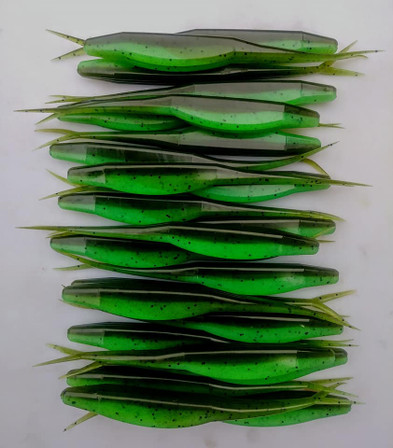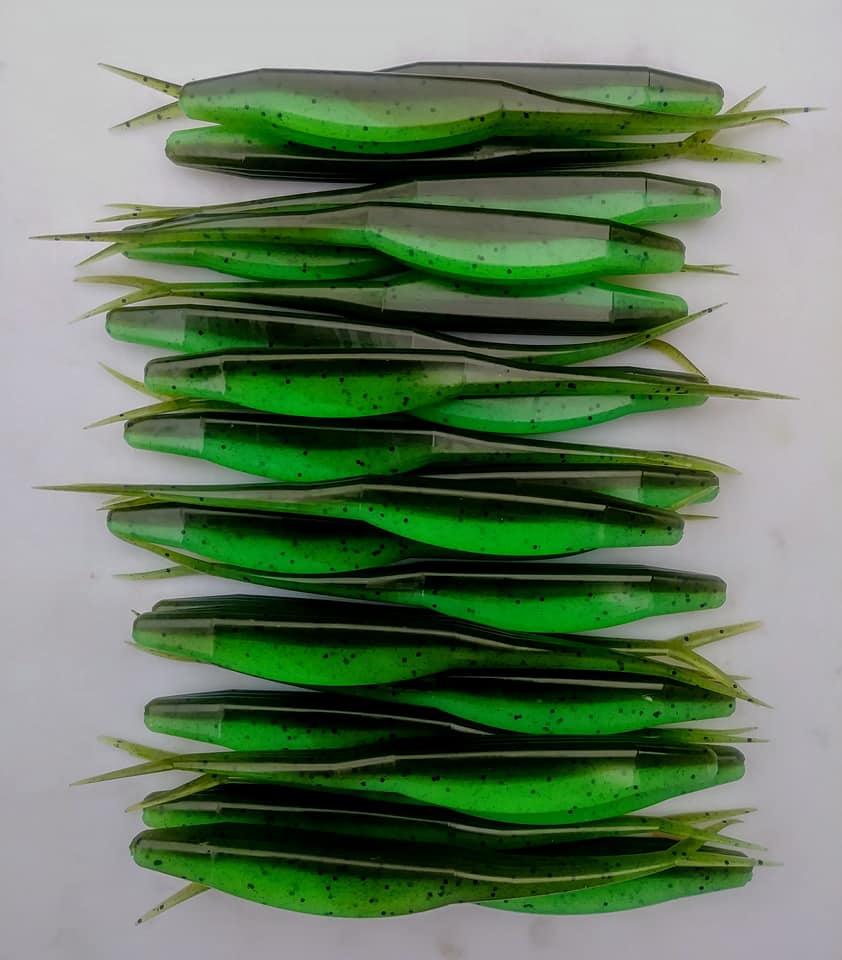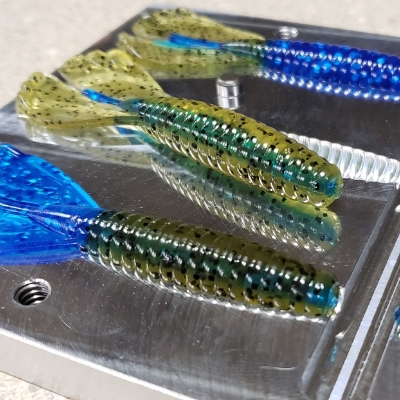Making Soft Plastic Baits - How To Get Started
By Angling Ai on 7th Feb 2024


Making Soft Plastic Baits
How To Begin and What You Need
Making soft plastic baits? Is that even possible? Can I do that around my home? Yes, you can, and it's easy.
When researching how to get started and what you need it can seem overwhelming. There are plenty of mold options and different materials available that can muddy the waters. Let us take a look at what you need to make baits in your comfort zone that do their job, catch fish.
Needed Equipment:
What do I need to make baits? This is the number one question that is asked. Besides needing a mold and plastic, there are several items that you will want to have before you get started.
- Heating Source- a 700-watt microwave is preferred to heat plastisol. However, a hot plate with a thin saucepan can be used. A new 700-watt microwave will run around $50-$60 but you may find a used one at a thrift shop or garage sale.
- Probe or Radiant Thermometer- This is needed to make sure that the plastisol has reached the appropriate temperature to convert and if the plastic is the proper temp to inject or pour your mold.
- Microwaveable measuring cups- You will need these to measure how much plastisol you are going to use and heat in the microwave.
- Stirring Stick- You can use a butter knife, metal rod, screwdriver, etc.
- Injector- Only if you select or move into using injection molds. Injectors will allow you to inject a mold with your desired plastisol recipe.
- Griddle- A simple old pancake griddle is great for open pour molds to help you make a better bait. Heating the mold so that pouring a bait can be done easier and prevent bait errors from showing in finished baits.
- Protective Gear and Safety Precautions-
- You will need some mechanics gloves, welding gloves, or thick wool gloves to protect your hands when making baits. Plastisol needs to heat to just over 350 degrees Fahrenheit to start the reaction required to convert it from plastisol to plastic.
- Safety Goggles are suggested to protect your eyes when injecting or pouring plastic
- Ventilation- You need to make sure that when making baits you are in a well-ventilated area and getting good air flow to clear the room. Just like when painting a room, you will want to make sure there is a good flow of fresh air.
- When making your soft plastics wear toe-covering shoes, long sleeves, and pants in case of an accident to prevent any unnecessary burns.
Choosing a Mold
When choosing a mold there are a couple of questions you need to answer.
- What type of finish do I want the bait to have?
- What type of bait do I use the most or like to use?
- What baits do I lose the most?
By answering these three questions it will make picking a mold much easier. If you want a store-bought bait finish (shiny) pick an aluminum milled mold. If you are looking for a dull finish you may select an aluminum cast or stone mold. Stone molds will require the mold to be oiled occasionally to keep it from sticking. You want to pick a mold that will be beneficial to you economically as well. If you lose a lot of ned rigs, or punching baits, getting a mold to make those baits will make sense. If you just use a lot of stick baits a stick bait mold makes sense. You can make 415 single-color 5” stick baits with one gallon of plastic. 415 stick baits can be quite expensive, at $8 for a bag of 10 stick baits that is 41 bags of bait totalling $328. Picking a mold that is an economic advantage is the best mold for you to get first.
The second step in choosing a mold will be what type of mold you want to use, injection or open pour. The advantages of injection are the number of baits that you can make and the speed at which you can make them. Injection molding will limit some of the creativity you can use in making baits. Open-pour molds will allow you to make more intricate baits with lots of design and color possibilities. It also removes the need for having to have an injector and is more economical.
Choosing Plastisol:
Plastisol is often the most confusing part of bait-making. What is durometer? Which one makes what type of bait? Floating, sinking, heat stabilizer, what do I need?
Durometer is how plastisol is measured. The higher the durometer the firmer the plastisol will be. Most bait makers like to start with a medium durometer plastic and adjust from there. Softener can be added to medium plastisol and make it more effective for making worm-type baits. A hardener can be added to make the plastisol firmer and increase its durability. If you are looking to make baits that need a lot of action, ex: ribbon tail worms, we suggest a lower-end durometer. Swimbaits will be a medium to medium firm durometer depending on the size and tube molds are typically made out of a firmer durometer plastisol. Pick a plastic that fits the bait and the style you like to fish with. Until you get a good look at what you are working with and what you will want to use we suggest ordering in a smaller quantity and dialing your preference in.
Floating plastic will usually not float a hook but will provide some floating principles to your lure and slow your sink rate. If you are looking for a fast fall and a bait to drag on the bottom of the water column sinking will make a better choice for you to use.
So Much to Choose From:
There are hundreds of colorant and glitter choices out there. Select colors that you want to make in your baits that fit the mold cavity design you select. Selecting the primary pigments can help you create other colors. Mixing Red, Blue, and Yellow will allow you to create some diversity in your baits. However, if you love throwing watermelon red, seed, or copper you should select a watermelon colorant.
Glitters will come in sizes varying from .08, .15, .35, .40, and even as large as .60. Having the different sizes will help add some depth to your baits. Manufactured baits usually use .15 and .35 or .40 the, most but some baits with three glitter sizes in them are using .08 more than the .60 size. The shape of the glitter can be square, hexagon, or whisker. Square and hexagon-shaped glitter do not change the appearance of the bait much but whisker glitter will give soft plastics a much different look. Glitter will last a while so ordering more than a few ounces would be overkill. Again select colors that you know you will want to use. A watermelon red recipe will usually need .35 black, .15 red, and .35 red to be completed and look great.
Helpful YouTube Video Links
https://youtu.be/-OEEHZSmMGI?si=HXoNGEUjn9mFch9V
https://youtu.be/zJ4aCCeLCrw?si=RIGx0W-zV38KC7D5
https://youtu.be/8X6RWGcLE8Y?si=pZbQWa7GeoIRI4F_
‘MAKE YOUR BAITS-YOUR WAY’
Making your baits at home is a great hobby to share with your family and loved ones. Catching a fish on a bait you made is tough to describe, but is an exhilarating feeling. The amount of materials and supplies on the market is overwhelming, but just beginning to make your baits will help with your knowledge of the products even more. Get a hand-pouring starter kit and make a few easy-to-make baits. It will come with some of the necessary items you need and help you develop a more complete understanding of the process. Once you catch a fish on a bait you made you will be ready to make many more.



